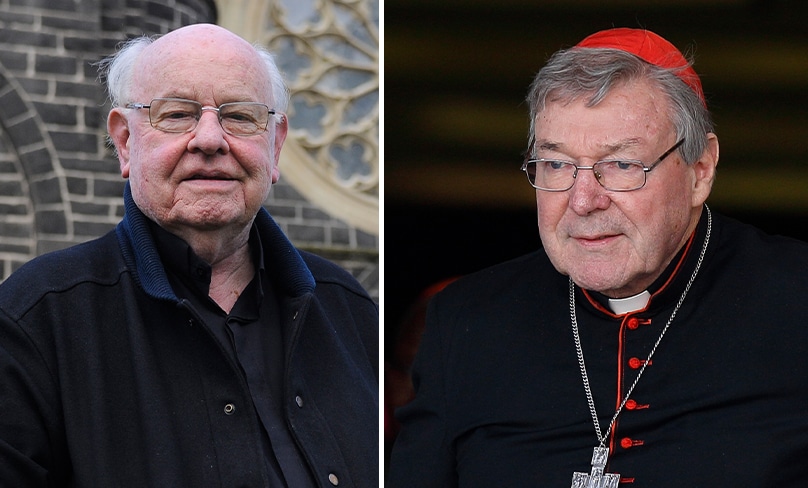
With the passing of Fr Bob Maguire into eternal life, the church in Australia has lost its “patron saint of the unloved and unlovely.”
Fr Bob was one of a few Catholic priests with instant name recognition, even among non-Catholics. The other was Cardinal George Pell. Now both have gone in one year.
For decades, Cardinal Pell was known in Australia and around the world as the embodiment of the church’s authority, and Fr Bob as the avatar of its “anti-authoritarian” streak, the inheritor of the tradition of the Holy Fools like Sts Francis and Basil.
At least that’s how they were seen. But as we know, appearances do not tell the whole story — the church is, after all, a mystery.
Fr Bob had his own larrikin way of building up the “official” church: he was no Protestantising individualist and referred to Jesus famously as the “head of the firm.”
His well-known April fool’s stunt, the drive-thru confessional with a menu of deadly sins to select from, was a way of saying the sacraments and tradition needed to be taken out to the people.
A decade later the joke became quite serious, as priests around the world experimented with similar measures during the pandemic.
Likewise, the Cardinal was known to use his immense authority in “anti-authoritarian” ways, contesting corruption in Rome, speaking his mind plainly in an age of PR and smooth talk, and by spending his private moments with Sydney’s “unloved and unlovely.”
The two butted heads in the public arena. On his retirement, Fr Bob said the Cardinal had “dishonourably discharged” him as parish priest of Sts Peter and Paul, Melbourne, in 2011.
Fr Bob said he was being punished by Cardinal Pell and then-Archbishop of Melbourne, Denis Hart, for being a “cafeteria Catholic” whose parish was a “dog’s breakfast” that served all-comers.
“Love and authority together, sometimes in tension, sometimes butting heads, but walking side-by-side into the empty tomb — that’s the church to which both priests belonged.”
Without trying to diminish the obvious differences and conflicts between the two men, one wonders whether either would ultimately have wished for a church that didn’t include the other.
That’s because authority and love together make the church. This was the view of the 20th century theologian Hans Urs von Balthasar, who noted that John and Peter ran together to the empty tomb of Christ (Jn 20:1-8).
In Von Balthasar’s view, John, the beloved disciple, represents the church of love. He outran Peter, and reached the tomb first. Peter, representing the church of authority, the official church, runs more slowly than love, which passionately strikes out ahead.
But John waited at the door and did not go in until Peter had first checked the tomb out. Love also waits to make sure things are done properly.
Love and authority together, sometimes in tension, sometimes butting heads, but walking side-by-side into the empty tomb—that’s the church to which both priests belonged.
If they seemed to represent two separate institutions at times, this is hardly a surprise. Fr Bob’s generation of Catholics, who were shaped by the age of Aquarius, valued love and the spirit of anti-authoritarianism above all else.
Yet many younger Sydney Catholics, growing up poorer, sicker, and with less freedom than their parents, in times of massive flux and anxiety, are grateful for the solidity and reliability of the official church: its institutions, its teachings, its sacraments.
If our last few decades of Catholic life in Australia seemed to put love and authority at odds with one another, the passing of these two avatars of the church should be a sign to the next generation: the church needs us to believe in its unity.
After all, the church of authority is most itself when it uses its power for good, especially for the “unloved and unlovely,” and to oppose corruption.
And real Christian love builds up others, safeguarding their dignity, and making us responsible—but always, as Fr Bob showed, with a twinkle in our eye and a self-deprecating joke.
Correction: An earlier version of this article mistakenly noted that Fr Bob Maguire’s generation of Catholics were “born in the age of Aquarius.” Fr Bob was born in 1934. The article has been amended.
